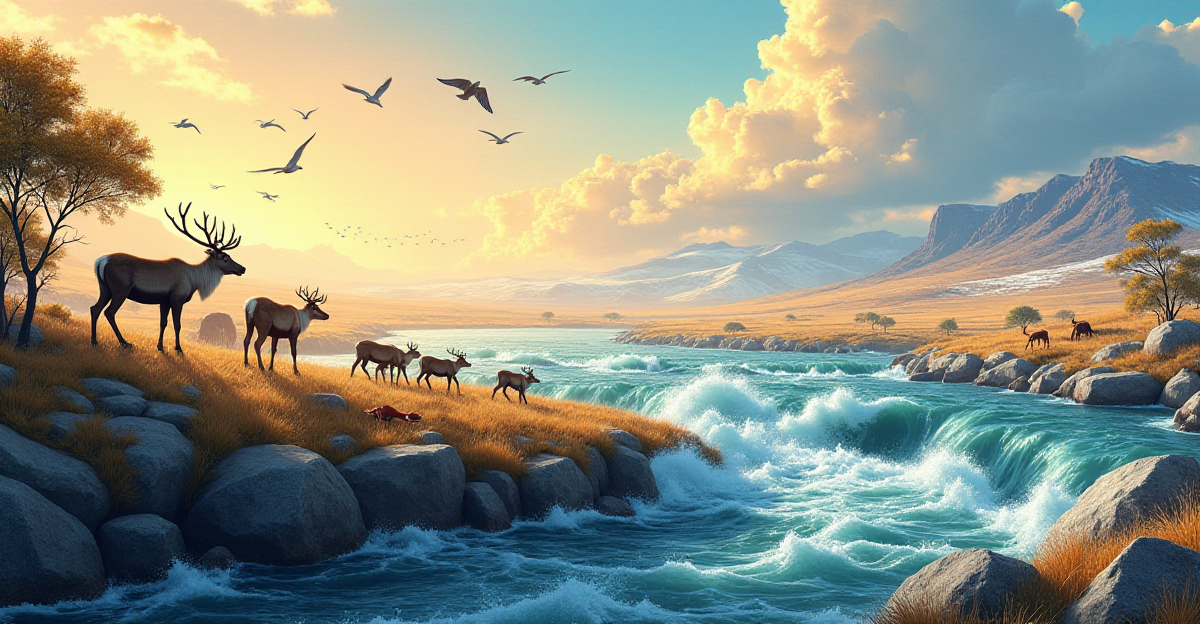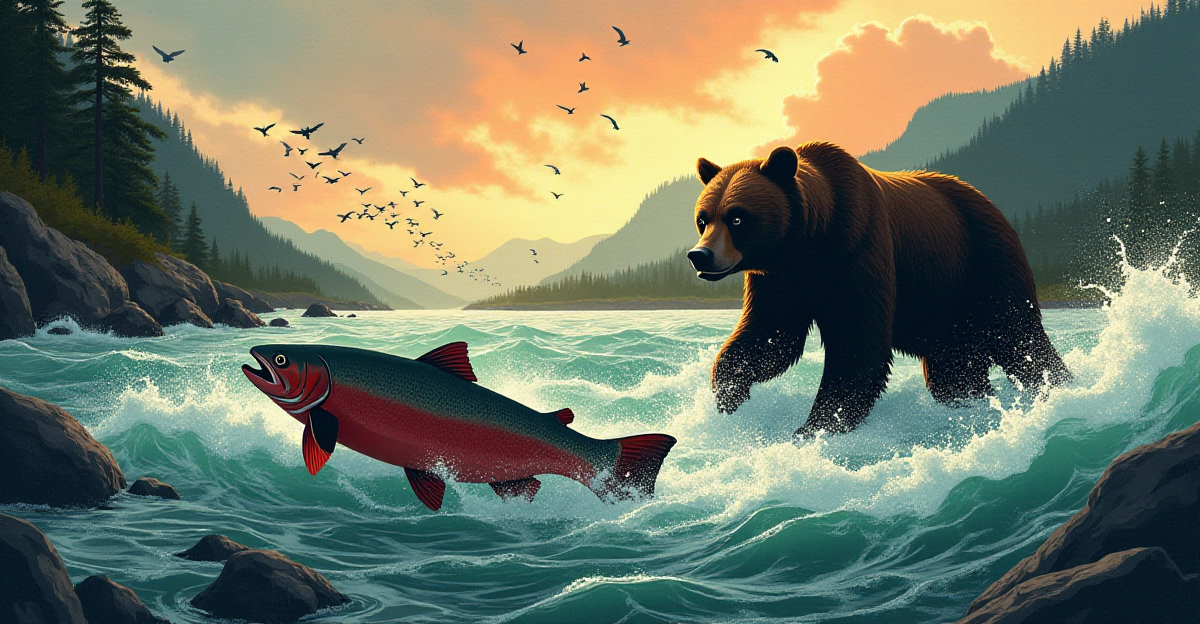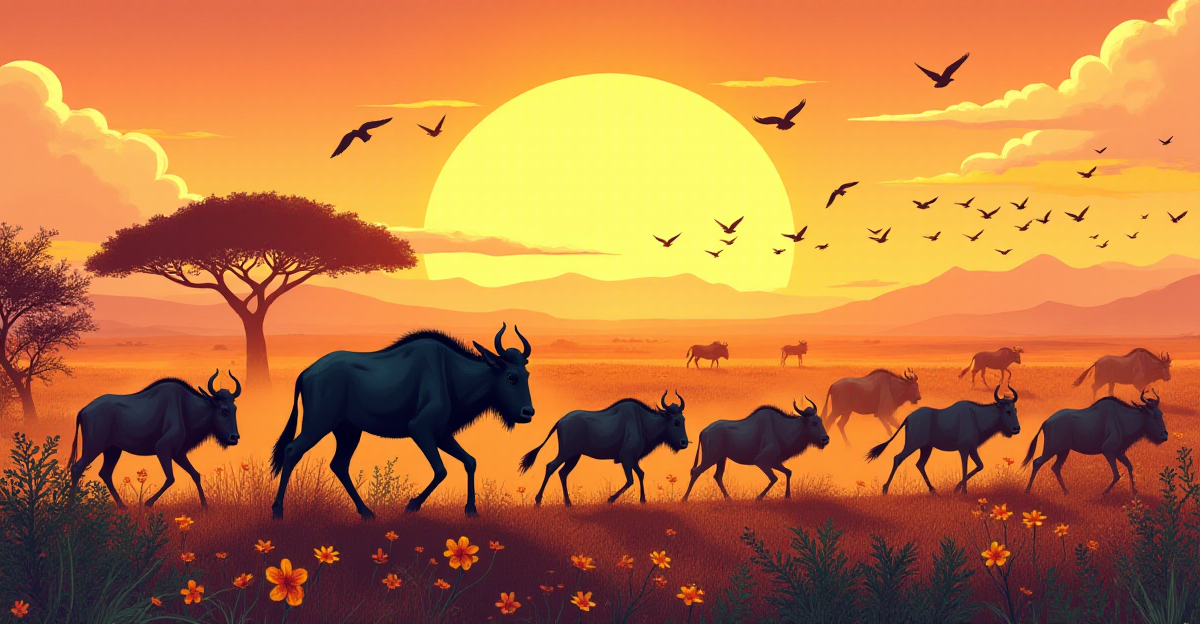One of the most amazing natural occurrences is animal migration; animals move thousands of miles in search of food, mate, or refuge from extreme conditions. The several forms of migration, the difficulties animals encounter on their travels, and the importance of migration for the survival of species will be discussed in this article. Inspired by first-hand bird viewing and animal films, we will value the incredible will of migrating animals.
Table of Contents
- Why Do Animals Migrate?
- Challenges of Animal Migration
- The Importance of Migration for Ecosystems
- Extra’s:
Why Do Animals Migrate?

Have you ever watched a flock of birds flying over the heavens and questioned why they are on such a protracted trip? Alternatively you might have been enthralled by a documentary on wildebeest migration over the African savanna. A fascinating natural occurrence that highlights animal amazing adaptability and resiliency is migration. An instinctual search for food, mate, and finally guarantees the survival of their species drives these enormous distances.
Why Do Animals Migrate?
Imagine a monarch butterfly, a small organism starting an amazing trip from the frigid areas of Canada and the United States and all the way down to the warmth of Mexico for the winter months. One amazing illustration of how animals use migration to get food and escape extreme weather is this seasonal migration. But what drives these creatures to venture thousands of kilometers, negotiate dangerous terrain, and face predators?
- Food Availability: Many species, especially birds, migrate to areas where food sources are abundant during specific seasons. Imagine a caribou herd, their hooves pounding the frozen tundra, as they embark on a migration to reach lush grazing grounds where food is plentiful. This journey allows them to access the nourishment they need to survive the harsh winters.
- Reproduction: For many animals, migration is essential for successful reproduction. Take whales, for example. They migrate to warmer waters, seeking a nurturing environment to give birth and raise their young. This migration ensures the next generation has the best possible start in life, free from the dangers of frigid temperatures and predators.
- Climate Change: Animals migrate to escape extreme weather conditions. Think of the wildebeest in the Serengeti, their hooves drumming a symphony of movement as they migrate across the plains. This incredible journey is driven by their instinctive response to changing climate conditions, seeking out the best environment for survival.
The Challenges of Migration
Though it’s a natural process, migration presents certain difficulties. Imagine a salmon battling its way upstream, its scales shining in the sunlight as it opposes the flow. It deals with ravenous predators hiding in the shadows and dangerous rapids.
- Predation: Migrating animals are vulnerable to predators, especially when they are fatigued from long journeys. This risk is heightened when they are crossing open areas, where they are exposed and vulnerable to attacks from predators like wolves, bears, or eagles.
- Natural Disasters: Migrating animals often face the wrath of nature. Storms, floods, and other natural disasters can disrupt their journeys, leading to injuries and even death. These challenges are especially significant when they are crossing large bodies of water, where they are at the mercy of the elements.
- Habitat Loss: Human activities are increasingly impacting the environment, leading to habitat loss, a growing threat to migration. This loss can disrupt migration routes, making it harder for animals to reach their destinations, reducing the success rate of these journeys. This is a significant concern for many endangered species that rely on migration for survival. For example, the loss of wetlands along the migratory routes of shorebirds is a major concern, as these birds rely on these habitats for resting and feeding.
The Importance of Migration
Migration is not only a show of nature; it is also essential for the survival of our ecosystems. It facilitates the spread of species over large areas, therefore enabling seed distribution, pollination, and control of predator-prey dynamics. Studying migration will help us to better grasp the complex network of life and create conservation plans to safeguard these essential operations. It may surprise you to find that even little actions like lowering our carbon footprint can significantly help to preserve the future of migrating species. Let’s cooperate to make sure next generations may keep in wonder at the amazing travels of migrating species.
Challenges of Animal Migration

Have you ever watched a documentary about wildlife migrating across vast landscapes? It’s a truly mesmerizing sight to see animals embark on these incredible journeys. However, these migratory journeys are not without their perils. Migrating animals face a multitude of challenges, from natural hazards to the impact of human activities, that can threaten their survival.
Imagine a salmon, battling against powerful currents as it makes its way upstream to its spawning grounds. It’s a remarkable testament to their resilience, but this journey is full of danger. This perilous journey is not unique to salmon; countless species encounter similar challenges during their migrations.
The Perils of the Journey
One significant challenge migrating animals face is predators. They often become more vulnerable to predators like wolves, bears, and eagles when they are fatigued from their long journeys. These predators are always on the lookout for a quick and easy meal, and migrating animals, often traveling across open areas, become easy targets.
Natural disasters can also wreak havoc on migrating animals. These events can lead to injuries or even death, particularly when animals are crossing large bodies of water. Strong winds and storms can damage the delicate wings of the monarch butterfly, posing a serious threat to their long migration journey.
The Impact of Human Activities
Humans are playing an increasingly detrimental role in the survival of migrating animals. We are changing landscapes, introducing pollutants, and altering the climate, all of which have a direct impact on migration patterns.
Climate change disrupts the timing of migrations, making it harder for animals to find food and suitable breeding grounds. For example, the timing of bird migrations is becoming increasingly out of sync with the availability of food and nesting sites, putting their survival at risk.
Habitat loss due to human activities is another major threat to migrating animals. The loss of wetlands along the migratory routes of shorebirds, for instance, is a serious concern as these birds rely on these habitats for resting and feeding.
It’s up to us to protect these incredible journeys and the species that depend on them. We must work together to ensure the survival of these magnificent animals.
The Importance of Migration for Ecosystems

Have you ever watched a herd of wildebeest migrating across the Serengeti, their hooves pounding the earth as they travel thousands of miles in search of fresh grazing grounds? This incredible spectacle is just one example of how wildlife migration plays a vital role in shaping our world. These journeys, undertaken by countless animals each year, are not just beautiful to watch, but are essential for the health and stability of our ecosystems. Every organism, from the smallest insects to the largest mammals, plays a role in this delicate balance, and migration is a critical factor in maintaining that harmony.
How Migration Shapes Our World
Imagine yourself walking through a vast meadow, the air buzzing with the sounds of life. Butterflies flit from flower to flower, their wings laden with pollen. These butterflies, migrating from distant lands, carry pollen on their wings, spreading it far and wide, vital for plant diversity and the propagation of species. The species survival of many plants depends on this critical process, as it ensures the successful pollination of plants, contributing to the abundance of plant life.
Take the example of the Ruby-throated Hummingbird, a tiny bird that migrates thousands of miles from the United States to Mexico each year. As it travels, it pollinates a wide variety of flowers, ensuring the reproduction of these plants and the survival of the entire ecosystem.
The Crucial Role of Migration in Maintaining a Healthy Ecosystem
Pollination: Migratory animals ensure the successful pollination of plants, contributing to the diversity and abundance of plant life. The Ruby-throated Hummingbird, for instance, is an essential pollinator of many flowering plants, traveling long distances to reach their preferred flowers. This is a vital process for both the hummingbird and the plants, as it ensures the survival of both species.
Seed Dispersal: Wildlife migration enables animals to transport seeds across vast distances, establishing new populations and fostering the health of various ecosystems. The monarch butterfly, for example, migrates thousands of miles from Canada and the United States to Mexico, where it lays its eggs on milkweed plants. The caterpillars that hatch from these eggs then eat the milkweed, and when they transform into butterflies, they carry the milkweed seeds with them as they migrate back north. This is particularly crucial in maintaining the biodiversity of forests and grasslands, ensuring the survival of various animal species.
Predator-Prey Regulation: Migration helps regulate the delicate balance between predators and their prey. The movement of vast herds of animals, like wildebeest in the Serengeti, provides a vital food source for predators, preventing prey populations from becoming unchecked. This dynamic interplay ensures the stability and health of the ecosystem, preventing any single species from becoming dominant. Without these migrations, the balance of our forests and grasslands would be thrown off, impacting the entire ecosystem.
Nutrient Cycling: Migration contributes to the essential cycling of nutrients in our ecosystems. Migratory birds, for instance, transport nutrients from one region to another, enriching the soil and contributing to the overall health of the environment. These journeys ensure the essential flow of nutrients, supporting the growth and development of diverse flora and fauna, and contributing to wildlife migration and species survival. Take, for example, the Pacific Salmon, which spends years at sea before returning to its freshwater spawning grounds. These journeys bring essential nutrients from the ocean to the freshwater ecosystems, enriching the soil and supporting the growth of trees and other plants.
Migration is a vital process, not just for individual animals, but for the health and stability of our ecosystems as a whole. It’s a testament to the incredible resilience and interconnectedness of the natural world. By understanding and protecting migration, we can ensure the continued health and vitality of our planet for generations to come.
We must work to protect animal migration from the threats posed by climate change, habitat loss, and other human activities. Conservation efforts, such as creating protected areas and reducing our environmental footprint, are crucial for ensuring the survival of these incredible journeys. By taking action now, we can help to safeguard the future of our planet and the amazing animals that call it home.
Extra’s:
If you are interested in learning more about the incredible healing powers of nature, you might want to check out our post on “Regenerative Medicine: How Science Is Healing the Body Naturally.” It explores how scientists are harnessing the body’s own innate healing abilities to treat a wide range of conditions. Similarly, our post on “How Climate Change Is Threatening Coral Reefs and What We Can Do About It” sheds light on the devastating impact of climate change on our planet’s ecosystems. It highlights the crucial role of conservation efforts in protecting these fragile environments.
For those who want to delve deeper into the fascinating world of animal migration, we recommend exploring the “Migration patterns and navigation | Animal Behavior Class Notes | Fiveable” page. It provides a comprehensive overview of migration patterns and the remarkable navigational abilities of various species. You can also learn about the “5 surprising obstacles to migratory animals’ journeys – UNEP-WCMC,” such as habitat loss, climate change, and human infrastructure. These challenges highlight the importance of conservation efforts to protect the migratory paths of these incredible animals.











